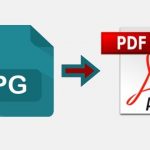The challenge of staying compliant with the myriad of regulations and laws in the business has never been more daunting. Organizations across sectors find themselves grappling with the need to adhere to local, national, and international regulations, a task complicated further by the dynamic nature of these laws.
The advent of reporting and management software represents a significant leap forward, offering a way to streamline and simplify compliance efforts through sophisticated automation and data management techniques.
The Compliance Landscape
Navigating the compliance landscape requires a deep understanding of the regulatory requirements that impact an organization. The spectrum ranges from financial regulations, such as the Sarbanes-Oxley Act (SOX) and the Dodd-Frank Act in the United States, to data protection laws like GDPR and HIPAA.
Each of these regulations mandates strict governance and reporting standards, failure of which can result in significant penalties. The complexity is amplified for organizations operating across borders, which must contend with a patchwork of international laws and standards.
Also Read: Netchex: Streamlining Payroll and HR Management Workforce Solutions
The Power of Automation
The cornerstone of modern compliance management software is its ability to automate complex and time-consuming tasks. These systems reduce manual labor significantly, from automating data collection and processing to ensuring the timely filing of compliance reports.
Automation extends to monitoring compliance across different jurisdictions, alerting to changes in legislation, and ensuring that the organization adapts to these changes swiftly. This enhances efficiency and minimizes the risk of errors that can lead to non-compliance and potential fines.
Data Management and Security
At the core of many compliance challenges is managing and protecting sensitive data. Reporting and management software offers robust tools for data encryption, access control, and audit trails, ensuring that sensitive information is handled according to the highest security standards.
These systems enable organizations to maintain a secure and compliant data environment, which is crucial in an era where data breaches can have catastrophic consequences.
Also Read: 10 Inventory Tracking Management Software for Manufacturing
Integration with Existing Systems
A critical aspect of selecting the right compliance software is its ability to integrate seamlessly with existing business systems. Whether it’s HR databases, customer relationship management (CRM) systems, or financial accounting software, the compliance software should not operate in isolation.
Effective integration ensures compliance management becomes a part of the organization’s daily operations, enhancing the overall strategic approach to governance, risk management, and compliance (GRC).
Training and Support
Implementing new software requires technical integration and a cultural shift within the organization. The best compliance software providers offer comprehensive training and support to ensure staff can effectively utilize the system.
Ongoing support and updates are crucial to address the evolving compliance landscape, ensuring that the software continues to meet the organization’s needs.
Leveraging Compliance for Strategic Advantage
Far from being just a necessary burden, compliance can be leveraged for strategic advantage. Organizations that embrace advanced reporting and management software can gain insights into operational efficiencies, uncover potential areas for cost savings, and enhance their reputation for integrity and reliability.
In this light, compliance management becomes about avoiding penalties and building a stronger, more resilient, and more competitive business.
Also Read: How To Use PSA Software To Streamline Your Business Processes
Embracing Regulatory Technology Innovations
Organizations are increasingly utilizing advanced technologies such as artificial intelligence (AI), blockchain, and cloud computing to navigate the complexities of compliance across various sectors.
These technologies offer significant advantages for managing regulatory processes: AI can quickly analyze large volumes of data to identify potential compliance risks, blockchain provides a secure and transparent way to handle records and transactions, and cloud computing delivers the flexibility and scalability needed to adapt to regulatory changes efficiently.
By integrating these innovations, companies can meet their compliance obligations more effectively and demonstrate a commitment to innovation and proactive management in their operations.
Enhancing Risk Management and Compliance Posture
Enhancing an organization’s risk management and compliance posture is significantly bolstered by software designed to identify, assess, and mitigate non-compliance risks.
These systems proactively scan for potential issues, continuously monitoring compliance levels. With capabilities to alert users about discrepancies and recommend corrective actions, such software plays a crucial role in maintaining and improving an organization’s compliance stance.
This proactive approach addresses compliance risks efficiently and strengthens the overall risk management framework, ensuring organizations remain aligned with regulatory requirements and avoid potential penalties.
Future-proofing Compliance Efforts
The future of compliance is undoubtedly digital. As regulations become more complex and enforcement more stringent, adapting and responding quickly is paramount. This software simplifies current compliance efforts and also offers flexibility for the future.
Advanced analytics and machine learning capabilities can predict compliance risks before they arise, offering organizations a proactive approach to compliance management.
Also Read: Monday.com Login: How to Login Monday Account and Delete
Conclusion
Reporting and management software simplifies the complex compliance landscape, enabling organizations to navigate regulatory requirements more easily and efficiently.
This software significantly reduces the burden on businesses by automating critical processes, enhancing risk management, and ensuring adaptability to regulatory changes.
Ultimately, it allows companies and their employees to focus on core activities, fostering a more streamlined, compliant, and productive operational environment.

Techspurblog is a blog dedicated to providing industry-leading insights, tips, tricks and tools on topics such as web design, app development, Digital Marketing, Education, Business and more. We also provide reviews of the latest tech products and services that can help you get the most out of your business.






